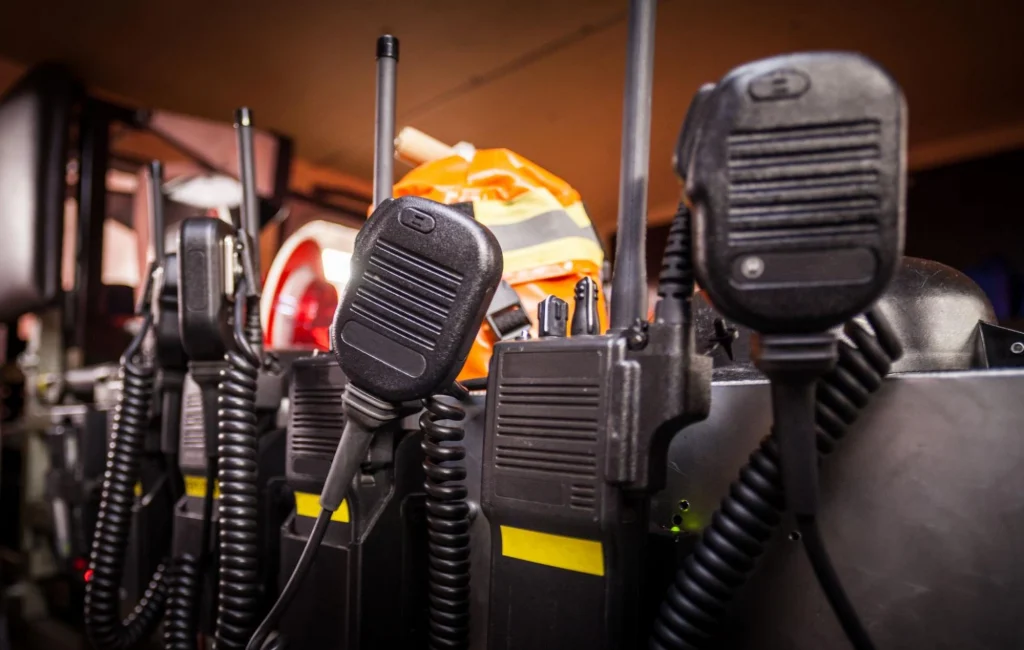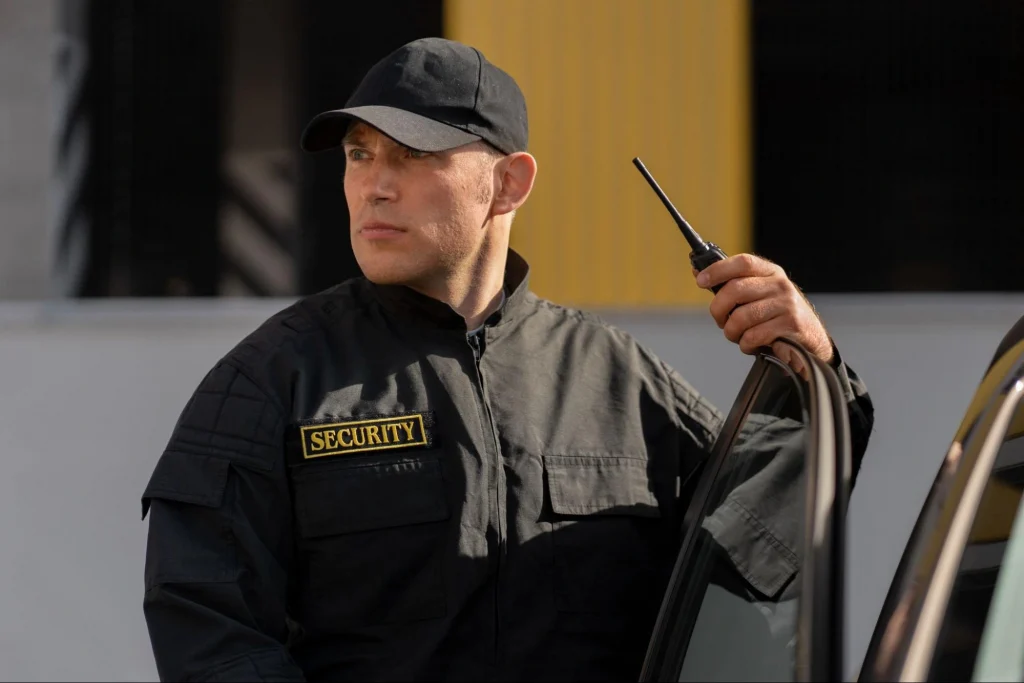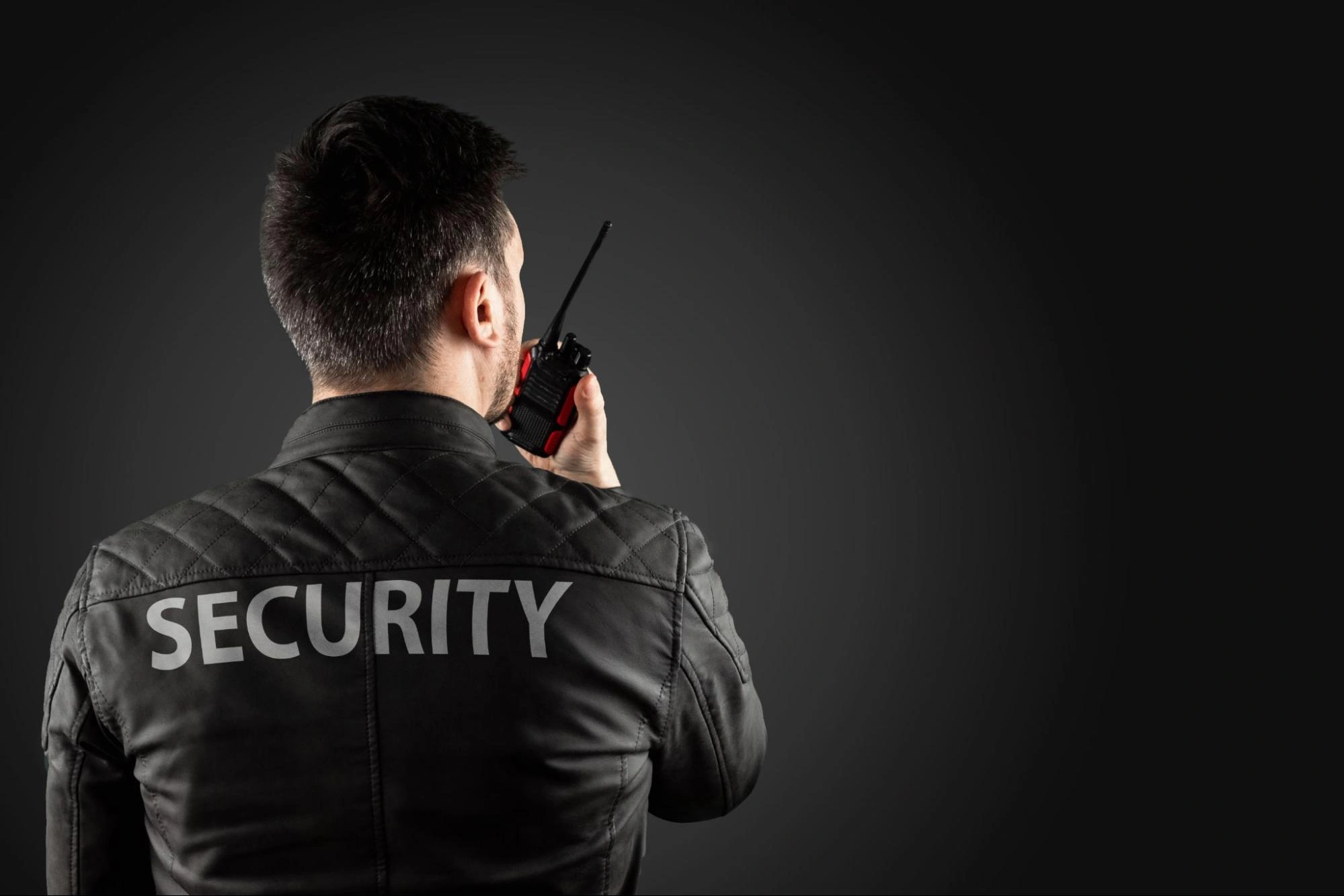“When you put on a uniform, you are no longer just yourself. You represent something bigger.”
As a security guard, you’ll have attire and equipment that aid you in performing your tasks.
Understanding what you’ll be expected to wear and use when on duty will allow you to better prepare for your first role.
In this guide to security guard equipment and uniforms, we provide practical tips and guidance to help you look and act professionally wherever you’re posted or patrolling.
1. ID or Licence
After becoming a security guard, you’ll receive a license with your name, photograph, and unique identification number. This license must be carried at all times while on duty and presented when requested by authorities or clients.
If your license is out of date, damaged, or lost, it could cause legal issues for yourself and your employer.
When posted at client locations, you may also be given an ID card that identifies you as an authorized security guard for that specific site.
If either your ID or license is missing, report it immediately to your supervisor or employer.
2. Notepad and Pen
Observation and documentation are highly important skills to develop as a security guard.
Wherever you’re on duty, you’ll need a notepad and pen to record incidents, observations, or instructions.
You’ll be expected to document details such as times, descriptions, and events, which can be used in reports or as evidence.
Make sure your notepad and pen are easily accessible, and write legible notes that can be clearly understood without any ambiguity.
We also recommend carrying an extra pen in case your first one runs out of ink and investing in a waterproof notepad that can better withstand rainy conditions.
3. Handheld Radios
Security guards regularly use radios to report incidents, receive instructions, and coordinate with other team members. Your radio will typically be attached to your belt or in a holder, but you may also just have it in your hand.
In our radio procedures module, we outline the proper techniques for using two-way radios, such as how to operate the radio, how to identify yourself, and key phrases to use.
Being confident in your radio use will let you communicate with other guards better, preventing confusion or wasting time in routine operations and emergencies.
Guard Training Tip: Practice the phonetic alphabet (A for Alpha, B for Bravo, etc.) to help minimize misunderstandings when conveying critical information over the radio.

4. Phone
You may also use a smartphone to relay information and receive instructions. If a situation escalates beyond your control, someone is seriously injured, or there’s an emergency such as a fire, call 911 on your phone and immediately relay the details to emergency responders.
If you’re called to an incident, you can take photos or record video from your phone to document the situation and aid law enforcement investigations.
Never use your phone out of boredom or to engage in personal conversations, as this can distract you and lead to lapses in your environment’s security.
Earpieces
Another way to communicate when on duty as a security guard is through earpieces. Earpieces fit inside or around your ear and allow you to hear radio transmissions or instructions from your team without broadcasting the information to the surrounding area.
With an earpiece equipped, you can communicate while keeping your hands free, allowing you to operate other equipment simultaneously.
Some clients may prefer you to use earpieces over other devices, as they can make the security approach appear more professional, organized, and efficient.
5. Lethal & Non-Lethal Defensive Weapons
If you want to be an armed security guard, depending on your state, you will need additional training, psychological evaluation, and licensing.
Once licensed as an armed guard, you may receive a handgun carry permit.
Armed licensing also permits you to carry non-lethal defensive weapons, such as:
- A baton: A type of club used as an impact weapon to block attacks or restrain individuals.
- Pepper spray: An aerosol spray used in self defence, crowd control, and other situations by irritating eyes and causing temporary blindness.
- A taser: A conducted energy device (CED) that delivers an electric shock to incapacitate an individual.
Keep in mind that if you’re only licensed as an unarmed guard, you are not permitted to carry or use any of these weapons.
6. Flashlight
When on night shifts or in low-light areas, you may need to use a flashlight to better inspect areas, identify threats, and navigate your way through your patrol path.
You may also utilize your flashlight to disorient potential individuals, but this should be done cautiously and only when necessary to protect yourself or others.
Acting aggressively or threateningly with the flashlight could cause unnecessary escalation and land you in trouble with clients or supervisors, so we suggest only using it for its intended purpose unless absolutely required for self-defense.
Make sure your flashlight is fully charged, and double-check that it works correctly before each shift.
7. Handcuffs
Depending on your employer’s policies and client’s preferences, you might have handcuffs attached to your belt. Handcuffs can be used to restrain and detain individuals, but you must be mindful of their use.
Handcuffs individuals only when necessary and in accordance with relevant laws, which you can find out more about in our liability and legal aspects, and arrest, search, and seizure security guard training modules.
If you have no choice but to handcuff an individual to protect others, ensure they are applied securely without causing unnecessary harm or discomfort.

Security Guard Uniform
You must wear an approved security guard uniform when on duty to show your authority and maintain a professional appearance. Check out our public relations training module to learn more about how your appearance impacts the public’s perceptions of you and your team.
The uniform helps identify you as a security officer, making you easily recognizable to both clients and the public, and key accessories will aid you when performing your duties.
Belt
A tactical belt is designed to carry different items, such as your radio, handcuffs, and flashlight.
You’ll have easy access to equipment, and by providing even weight distribution, the belt also helps reduce fatigue when on duty.
Hats & Caps
A baseball cap or hat, such as a beanie, may also be part of your uniform.
Hats can make you more easily identified by public members and can also protect you in different weather conditions. For example, a baseball cap can shield you from sunburn when patrolling in summer weather, while a beanie can keep you warm.
These hats will likely be a dark, neutral color and designed to match your uniform.
Only wear a hat if permitted to do so, and ask for confirmation from your supervisor, as clients will have different preferences.

Footwear
High-quality footwear, such as supportive boots, helps you stay comfortable during long hours of standing or walking. Your employer may provide boots, or you might need to purchase them yourself.
When shopping for boots, get a proper fitting to prevent discomfort, pinching, or blisters. Choose waterproof options to keep your feet dry in various weather conditions, and look for ones with good traction to avoid slipping or injury.
Safety Vest
There are several types of vests you may wear on duty.
High visibility vests are commonly worn to ensure you’re easily seen, particularly in outdoor events with large crowds or during night shifts.
Bulletproof and stab-proof vests may also be worn to protect you against attacks but can be heavier and less comfortable for long shifts.
Your supervisor will likely provide guidance on whether a vest will be necessary for your shift, so always follow their instructions regarding safety equipment.
Prepare for Security Guard Roles With Online Training
Enroll in our comprehensive training courses to make sure you’re fully prepared to use all the security guard equipment effectively and safely.
Our certified modules cover key areas, including officer safety, criminal law, employer policies, and communication procedures, giving you expert guidance on utilizing communication tools, defensive tactics, and tactical equipment to improve your skills and confidence as a security guard.
See our full list of courses here and begin training today!


